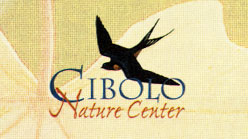Photography can be defined as the creation of an image through the interaction of light and some material agency. The most obvious and common instrument involved in this process is the device we have come to call the "camera"– what began as the 17th century painter's "camera obscura," or "dark chamber." The camera is an optical system designed for the primary purpose of producing an image (as was the camera obscura).
We may glibly speak of "creating an image," but what, exactly, is going on in the process? If you ask most photographers how an image is actually formed in the back of a camera, they might say something like– "Well, it's obvious...the lens in the front of the camera focuses the light from the scene, and the image is produced in the back at the focal point." This answer may satisfy some, but it is a trivial answer and doesn't really provide any significant information.
And what about the pinhole camera? This is probably the simplest camera of all, and it doesn't even possess a lens with which to "focus" an image at the back of the camera.
The creation of an image is possible through diverse means (at least five that I can think of right now), but all rely on using some simple geometric trick to work.
Just as a pinhole camera is the simplest of all cameras, it also uses the simplest of all imaging strategies. As the name implies, a very small hole (the "pinhole") is at the heart of the imaging technique. Here is how it works–
Imagine that the scene before the camera is simply a standard traffic light, with its red light at the top, an amber light in the middle, and a green one at the bottom. The camera's front wall (in which the pinhole resides) blocks something like 99.999% of the light emitted from the scene which otherwise would end up at the back of the camera. The remaining 0.001% of the light gets through the tiny pinhole and heads toward the back of the camera.
 |
A pinhole geometrically selects the correct rays to form an image in the back of a camera
© Bill Brockmeier, 2012 |
Since light travels in a straight line, the few light rays that came from the amber light in the middle of the traffic signal go straight through the pinhole and end up as an amber spot in the middle of the film plane in the back of the camera. Then, the light rays from the red light at the top of the signal, also traveling in a straight line, go through the pinhole and finally strike the film toward the bottom as a red spot. Lastly, the light rays from the green light at the bottom of the signal travel through the pinhole and end up on the film toward the top, making a green spot.
If you think about where these spots of light ended up, you can easily see how an image of the traffic signal is being formed on the film, and further, why the image ends up being inverted rather than right-side-up. If you substitute a more complex scene before the camera, the geometry is still exactly the same, with each tiny spot of light in the scene making a corresponding little spot of light at the back of the camera, but in an inverted location.
The pinhole is what is commonly called a "spatial filter," or a device which selects only a very narrow geometry of light rays to enter the camera. The pinhole effectively screens out almost all light rays, allowing through only those very few that will contribute to forming an image. The elegance of this system is breathtaking in its sheer simplicity.
In a following article I will look at the details of how a lens is able to form an image.




